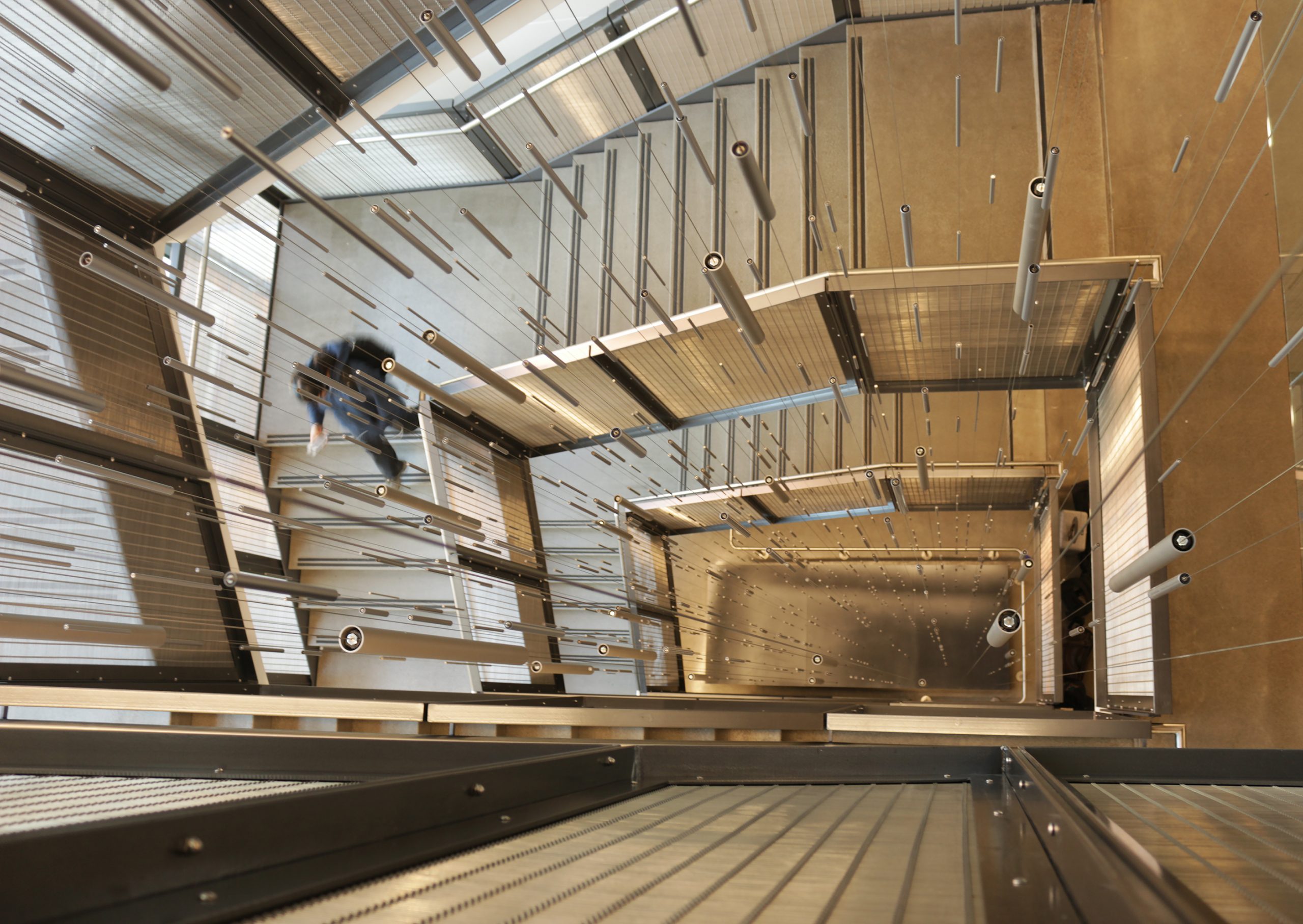
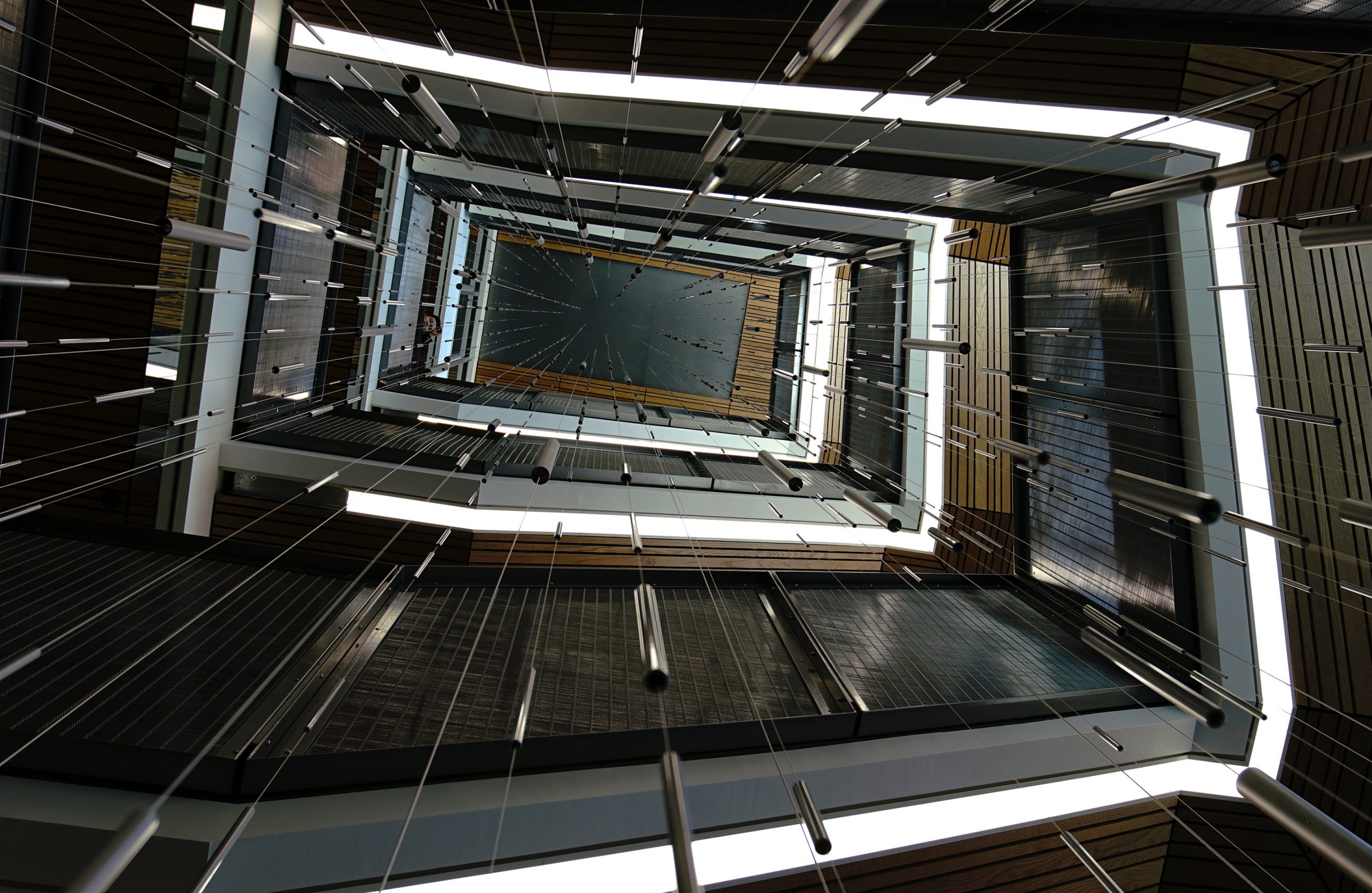
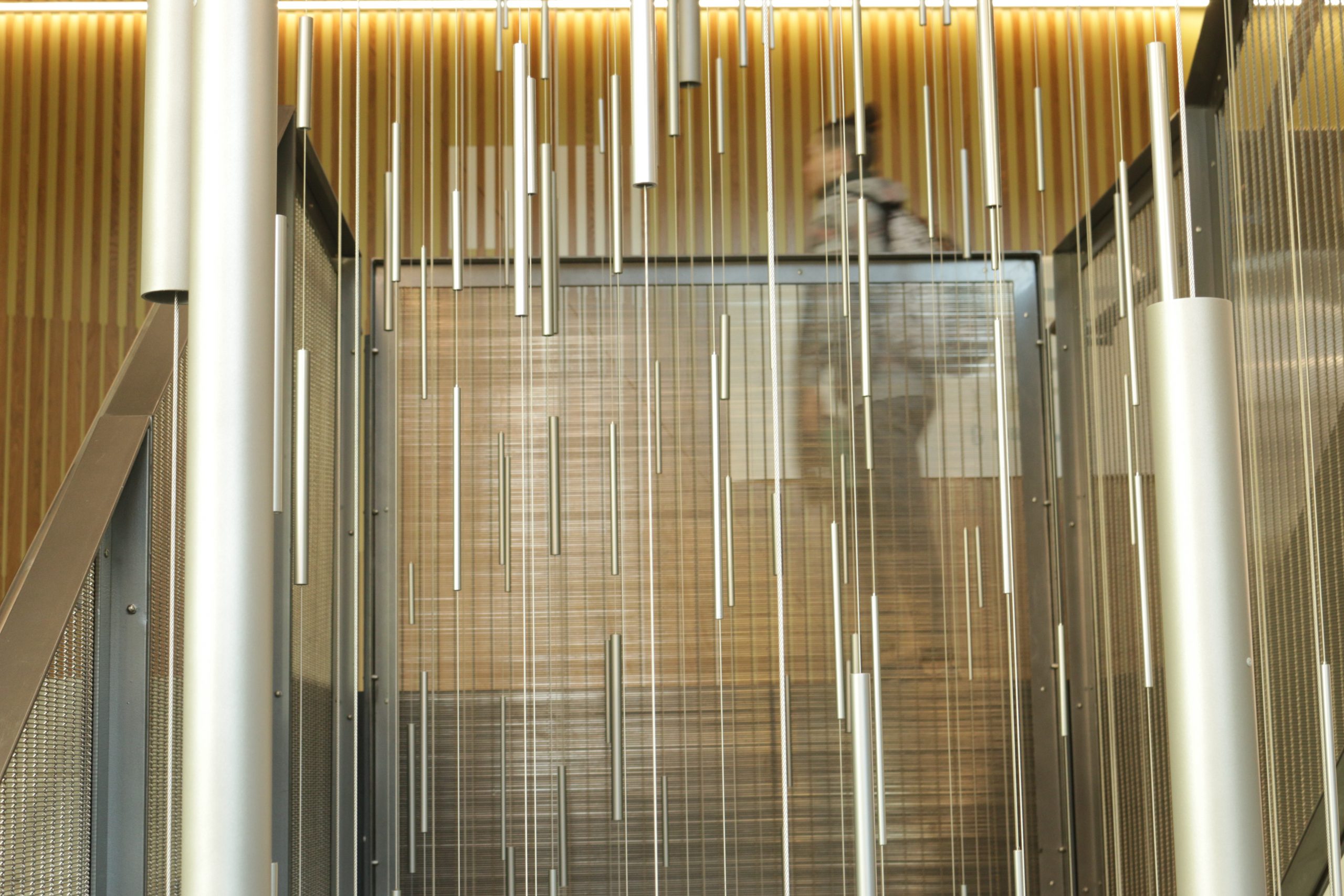
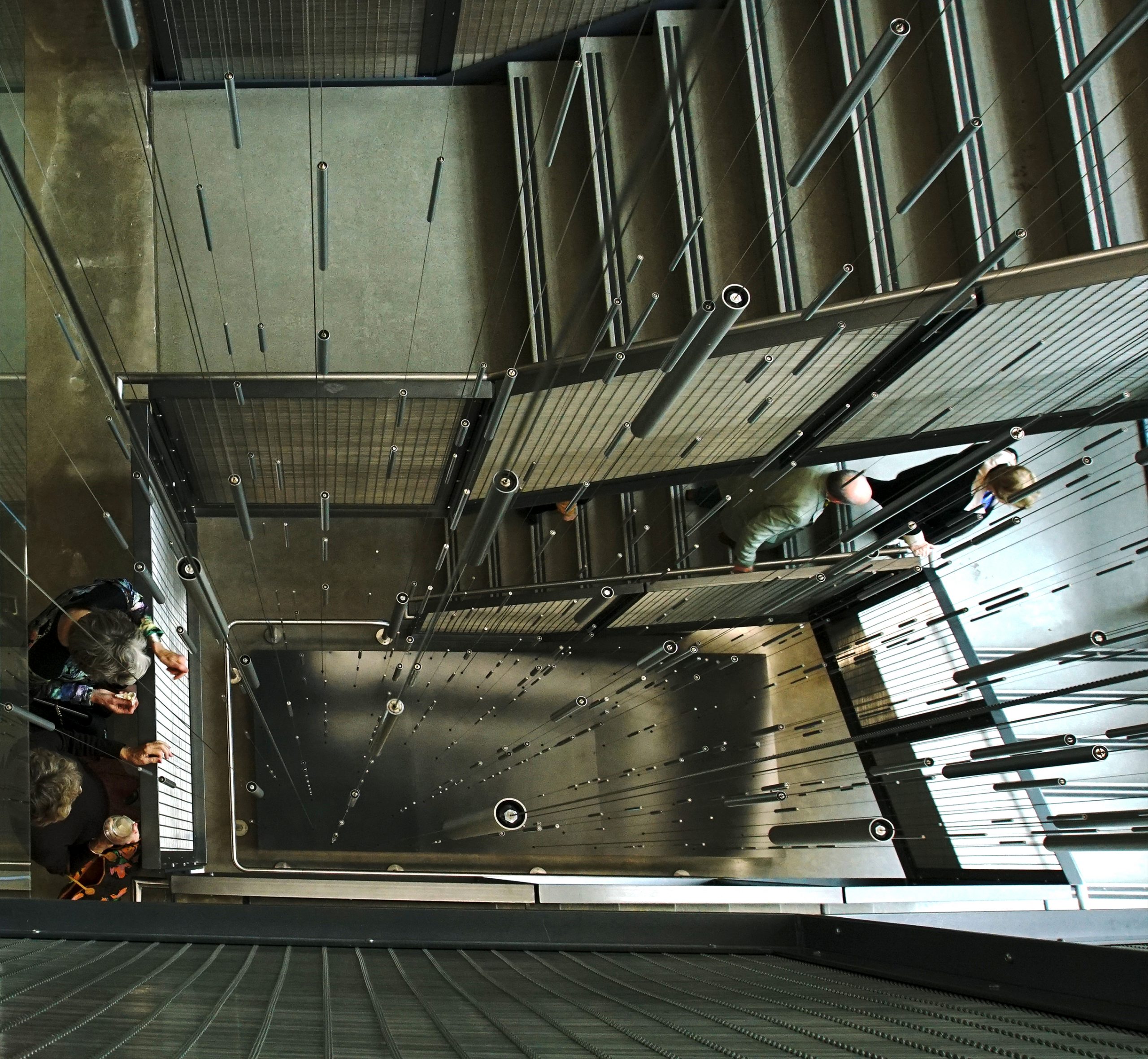
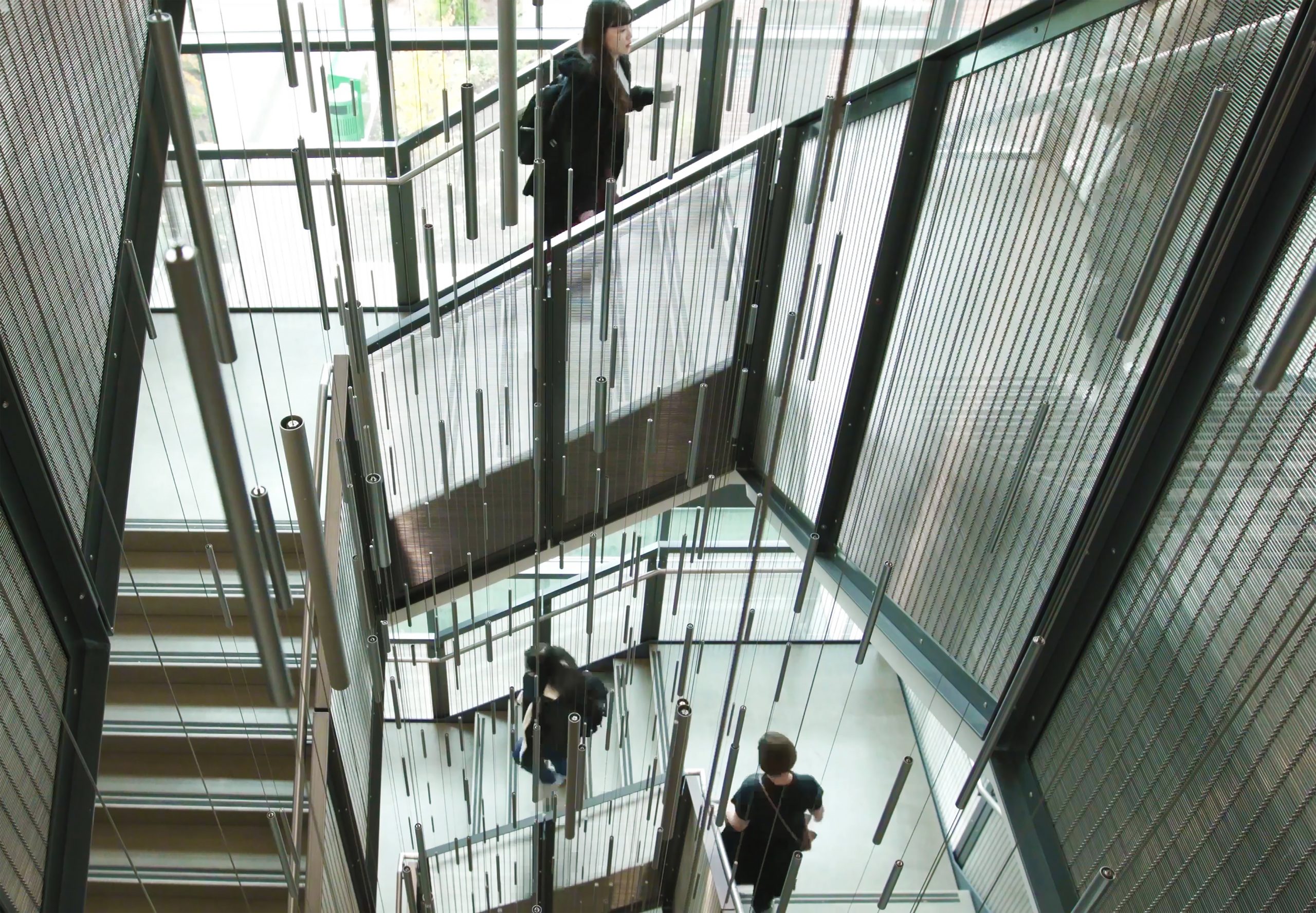
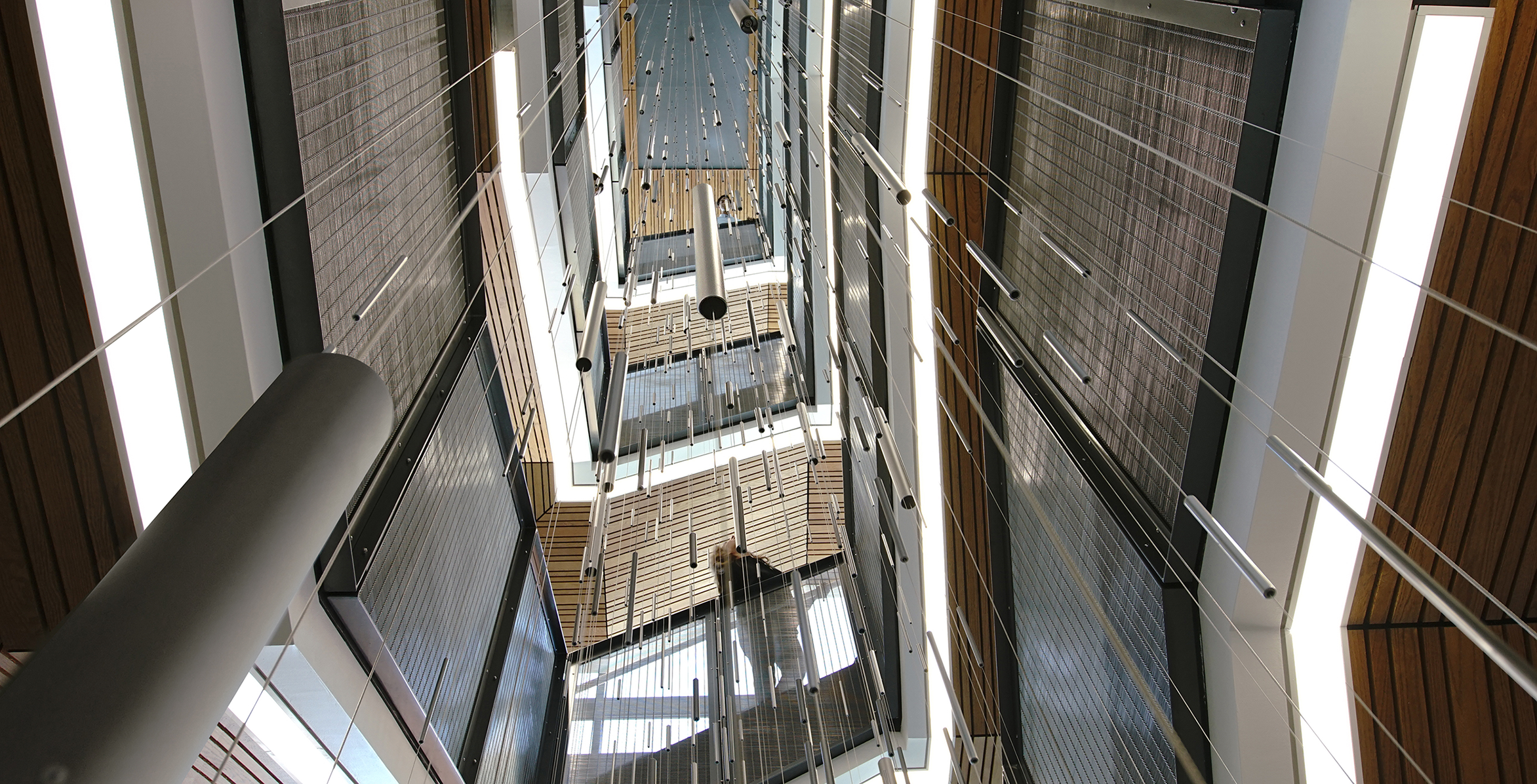
Client: University of Oregon
Location: Eugene, OR, United States
Completion date: 2019
Artwork budget: $200,000
Project Team
Artist
Susan Narduli
Narduli Studio
Art Consultant
Rebecca Banyas
Oregon Arts Commission
Custom Fabrication
Kevin Kane
Arktura LLC
Custom Fabrication
Eric Blumberg
Arktura LLC
Design Architect Tykeson Hall
Isaac Campbell and Michelle LaFoe
OFFICE 52 Architecture
Architect-of-Record Tykeson Hall
Chris Andrejko
Rowell Brokaw
Installation
Dave Armstrong
Fortis Construction
Overview
REFLECTANCE FIELD is suspended within the void of the monumental Main Stair of Tykeson Hall. It touches every level of the building.
The artwork is composed of individual “threads” held in tension. Reflective and non-reflective elements are positioned at varying points along the threads. Suspended within the 5 story space, the first impression may be of a field of rain as the reflective surfaces create a play of light and movement. As one approaches, a secondary reading of the artwork is revealed, an invitation to participate and create.
Reflectance Field is interactive. Carefully placed chimes within the field of 1100 “rain” elements transform the sculpture into a collaborative musical instrument. An abstract sculpture of static and dynamic elements, Reflectance Field brings a visual and auditory experience to Tykeson Hall that encourages collaboration and expression.
The transparency of both the stair and the artwork allow for an ongoing visual dialogue and engagement; the glass facade of the stairwell extends this dialogue as it connects Reflectance Field to the adjacent public square and to the broader campus.
Goals
Tykeson Hall was conceived as the “trailhead of the journey” - a place where students would learn to navigate their academic experience. The only building on campus that brings all students together, it fosters a sense of connectivity and belonging. That vision is at the core of the architectural design and it was most important to me that it be reflected in the artwork. The university was interested in an interactive experience, but did not have the resources for maintenance of a technology based work.
Early in concept development I began exploring the possibility of a collaborative sound installation - a musical composition that would unfold over time. Early sketches for a string instrument evolved into a field of chimes. I knew it was risky to propose a sound piece that would span the open plan floors but it received full support from the university as the consensus was that it embodied the spirit of Tykeson Hall.
Reflectance Field reinforces the central place-making role of the main stairwell as a physical and metaphorical symbol of connection and community. The siting within this place of chance encounters is intentional. For here is a natural place for fluid interactions, a place to experience the building as a “journey”, a visual expression of the vision of Tykeson Hall.
Process
The process of creating a 5 story musical instrument involved collaboration with custom fabricators, engineers, the building architects and key members of the University’s Design Team.
We knew we could make sound, but we wanted to make music, so we began with research into harmonics and acoustics. This informed the detailing of every aspect of the chime elements. Next came full scale prototype development and testing. Once we had a workable model the project moved into fabrication. Installation involved a team of people working from an intricate installation plan that located each of the 70 unique threads. Final “tuning” was done with cable tensioners at top and bottom.
Additional Information
REFLECTANCE FIELD CHANCE BASED SOUND SCULPTURE Chance Music is music in which some element of the composition is left to chance, and/or left to the determination of its performer(s). INTERACTIVITY: 35 chimes (35" to 53") on 20 cables and approximately 1100 "rain" elements (6" to 12") on 50 cables. Each chime is suspended on a stainless steel cable. A hollow metal tube with an internal striker is supported by a custom bracket that allows for movement and therefore sound reverberation. The artwork is “played” by striking. The chimes are a random placement of notes in the Pentatonic Scale. A singular note - or if more than one chime is played concurrently, a melody - will be created.